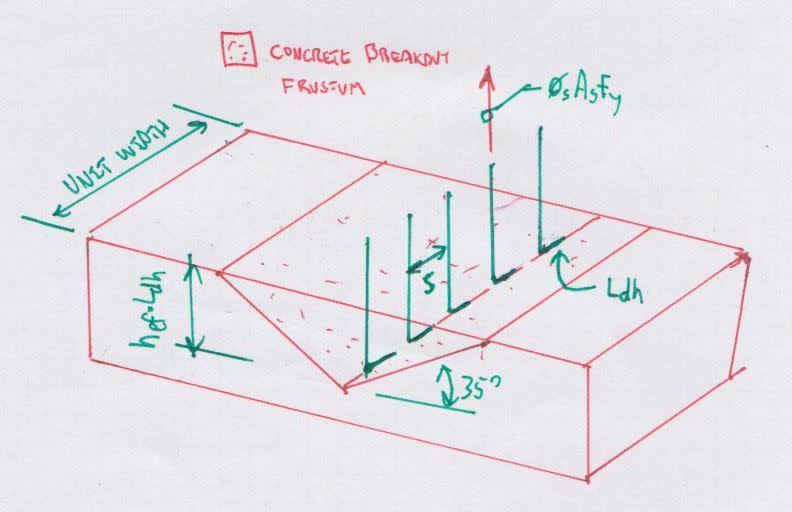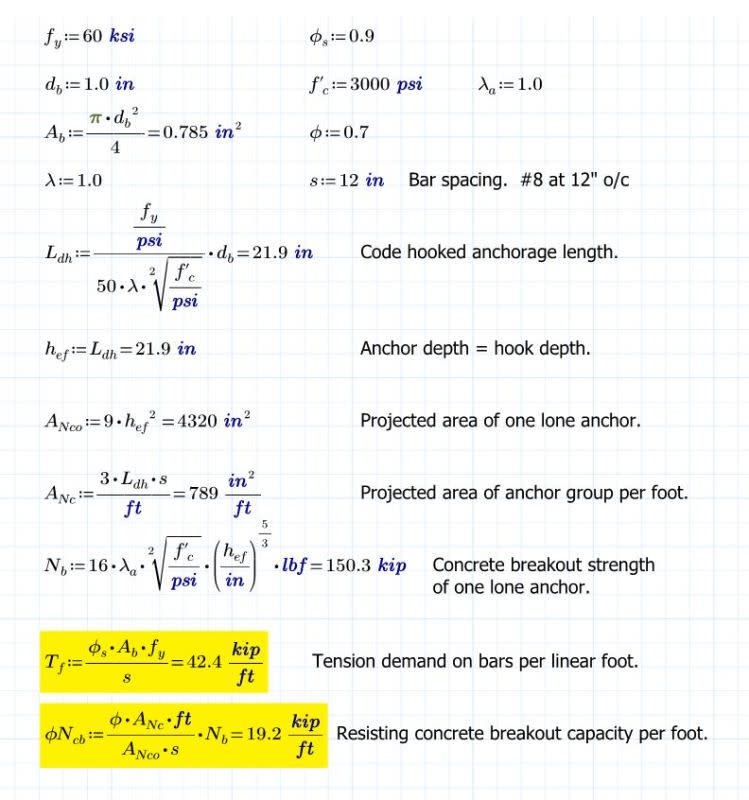pioneer09
Structural
- Nov 7, 2012
- 67
So I have a building column on an exposed 4' pier that is attached to a footing. Column connection to pier is only shear and design would be based on Appendix D of ACI. Where I am drawing confusion is with the pier to footing attachment. As I have rather large tensile forces that I am developing in the vertical bars of the pier, wondering how these bars should be checked both at the pier location and at the footing. Appendix D of ACI has sections for steel strength, concrete breakout, pullout strength, and side-faced blowout (which is not an issue in this case). Per App. D, these equations are really only for anchors. Does this point me to Chapter 12 for development lengths for the design of the "L" reinforcement bars that extend from the footing into the pier? Seems reasonable for tensile strength of steel and pullout, but what about breakout strength at the footing? Any help is appreciated.


